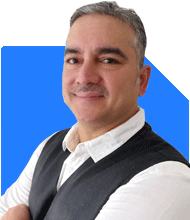Ramalingam Kalirajan |10908 Answers |Ask -Follow
Mutual Funds, Financial Planning Expert - Answered on May 23, 2024
He has an MBA in finance from the University of Madras and is a certified financial planner.
He is the director and chief financial planner at Holistic Investment, a Chennai-based firm that offers financial planning and wealth management advice.... more

Sir i have 5 lakh cash in my hand. where should i invest this amount ... At list for 10 to 15 yrs
Your 10 to 15-year investment horizon is ideal for achieving substantial growth.
Understanding Your Investment Goals
Before investing, it's essential to define your goals.
Consider factors like risk tolerance, expected returns, and financial objectives.
Creating a Diversified Portfolio
A diversified portfolio spreads risk and maximizes returns.
Let's explore various investment options suitable for a 10 to 15-year period.
Equity Mutual Funds
Benefits of Equity Mutual Funds
High Returns: Equity funds have the potential to offer higher returns over the long term.
Professional Management: Managed by experienced fund managers who make informed investment decisions.
Diversification: Invest in a diversified portfolio of stocks, reducing risk.
Types of Equity Funds to Consider
Large Cap Funds: Invest in large, well-established companies. These funds offer stability and consistent returns.
Mid Cap Funds: Invest in mid-sized companies. They have higher growth potential but come with increased risk.
Small Cap Funds: Focus on smaller companies. These funds can offer substantial returns but with higher volatility.
Actively Managed Funds vs. Index Funds
Actively managed funds aim to outperform the market through expert stock selection.
Index funds, on the other hand, merely track an index and lack flexibility.
Flexi Cap Funds
Flexi cap funds invest across large, mid, and small-cap stocks.
They provide flexibility and balance risk and reward.
Benefits of Flexi Cap Funds
Adaptability: Fund managers can adjust the allocation based on market conditions.
Diversification: Exposure to different market caps reduces risk.
Growth Potential: Can deliver good returns by investing in high-growth stocks.
Debt Mutual Funds
Benefits of Debt Mutual Funds
Stability: Less volatile compared to equity funds, providing stable returns.
Income Generation: Regular interest income from bonds and other debt instruments.
Diversification: Adding debt funds to your portfolio balances overall risk.
Types of Debt Funds to Consider
Short-Term Debt Funds: Suitable for conservative investors seeking stable returns.
Long-Term Debt Funds: Offer higher returns but with increased interest rate risk.
Hybrid Funds
Hybrid funds combine equity and debt investments.
They offer a balanced approach, providing both growth potential and stability.
Benefits of Hybrid Funds
Diversification: Exposure to both equity and debt markets reduces risk.
Balanced Returns: Potential for higher returns with moderate risk.
Flexibility: Fund managers can adjust the equity-debt ratio based on market conditions.
Starting a Systematic Investment Plan (SIP)
Benefits of SIP
Rupee Cost Averaging: Investing regularly averages out the purchase cost, reducing market volatility impact.
Discipline: SIP instills financial discipline, ensuring regular savings and investments.
Compounding: Regular investments leverage the power of compounding over time.
Emergency Fund
Before making any long-term investments, ensure you have an emergency fund.
This should cover 3-6 months of living expenses to handle unforeseen situations.
Consulting a Certified Financial Planner
Personalized Advice: A CFP can provide tailored investment strategies based on your goals and risk profile.
Holistic Planning: They consider your entire financial situation and future needs.
Expert Guidance: Benefit from their market knowledge and experience in managing investments.
Conclusion
Investing your ?5 lakh wisely can lead to substantial wealth creation over 10 to 15 years.
Consider a diversified portfolio with equity, debt, and hybrid funds, and start a SIP for disciplined investing.
Best Regards,
K. Ramalingam, MBA, CFP,
Chief Financial Planner,
www.holisticinvestment.in
You may like to see similar questions and answers below
Advait Arora | Answer |Ask -Follow
Financial Planner - Answered on Nov 22, 2023
Ramalingam Kalirajan |10908 Answers |Ask -Follow
Mutual Funds, Financial Planning Expert - Answered on May 15, 2024
Ramalingam Kalirajan |10908 Answers |Ask -Follow
Mutual Funds, Financial Planning Expert - Answered on May 20, 2024
Ramalingam Kalirajan |10908 Answers |Ask -Follow
Mutual Funds, Financial Planning Expert - Answered on May 29, 2024
Ramalingam Kalirajan |10908 Answers |Ask -Follow
Mutual Funds, Financial Planning Expert - Answered on Sep 11, 2025
Ramalingam Kalirajan |10908 Answers |Ask -Follow
Mutual Funds, Financial Planning Expert - Answered on Dec 20, 2025
Ramalingam Kalirajan |10908 Answers |Ask -Follow
Mutual Funds, Financial Planning Expert - Answered on Dec 20, 2025
Naveenn Kummar |237 Answers |Ask -Follow
Financial Planner, MF, Insurance Expert - Answered on Dec 20, 2025
Ramalingam Kalirajan |10908 Answers |Ask -Follow
Mutual Funds, Financial Planning Expert - Answered on Dec 19, 2025
Nayagam P P |10859 Answers |Ask -Follow
Career Counsellor - Answered on Dec 19, 2025
Ramalingam Kalirajan |10908 Answers |Ask -Follow
Mutual Funds, Financial Planning Expert - Answered on Dec 19, 2025
Ramalingam Kalirajan |10908 Answers |Ask -Follow
Mutual Funds, Financial Planning Expert - Answered on Dec 19, 2025
Ramalingam Kalirajan |10908 Answers |Ask -Follow
Mutual Funds, Financial Planning Expert - Answered on Dec 19, 2025
Radheshyam Zanwar |6751 Answers |Ask -Follow
MHT-CET, IIT-JEE, NEET-UG Expert - Answered on Dec 19, 2025
Radheshyam Zanwar |6751 Answers |Ask -Follow
MHT-CET, IIT-JEE, NEET-UG Expert - Answered on Dec 19, 2025














.jpg)











